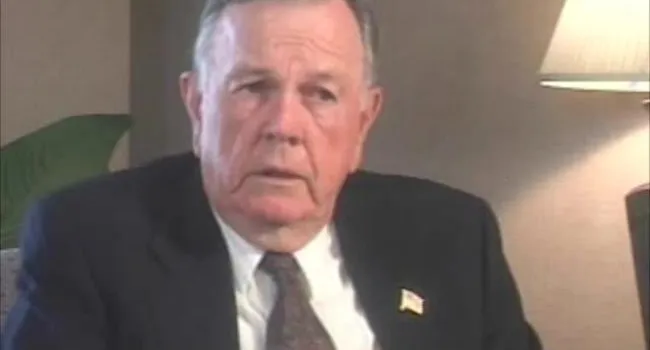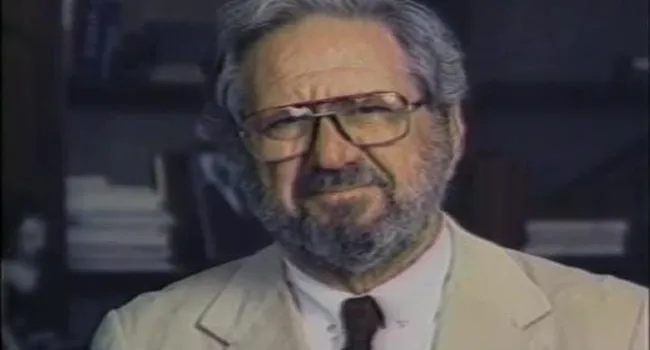J. Roy Pennell (1888–1971)
James Roy Pennell’s road to success was literally of his own making. He built many of the roads and bridges he traveled on and even manufactured many of the materials from which those roads were constructed. This modern-day pioneer in the road construction industry came to be known as “father of the South Carolina highway department.”
Roy Pennell was born near Belton, South Carolina, on March 23, 1888, the second son of James Robert and Nannie Browne Pennell. His ancestors had come from Ireland in 1827. For several generations, his family had tilled the land in the southern part of Anderson County. His father, a cotton farmer, probably fared no worse than most of his neighbors in the post-Civil War era. Pennell’s earliest schooling was in a one-room country school, but his parents, especially his mother, placed high value on education, and all nine of the Pennell children attended college and achieved distinction in their chosen fields.
Pennell attended Clemson College and Auburn University before enrolling at the University of South Carolina, from which he earned a degree in civil engineering in 1910. After graduation, he taught engineering at the University of Pennsylvania for two years, then returned to South Carolina to become highway engineer in Marion County. He also held a similar post in Green County, North Carolina.
A member of the South Carolina Engineers Corps, Pennell was sent to the Mexican border in 1916 to build roads and bridges in southern New Mexico while the United States was attempting to keep Pancho Villa in check. During World War I, Pennell served as captain in the First Battalion, 117th Regiment, S.C. Engineers, from October 1917 until January 1919. After the war, out of respect and affection, all who knew him called him “Captain Pennell” for the rest of his life.
A few months before his deployment overseas, Pennell had been selected to organize and staff a state highway department. Given the title of chief highway engineer, he was assigned the mission of initiating a system for issuing license tags and collecting fees from the nearly 40,000 automobiles and motorcycles then in use, overseeing the orderly disbursement of federal funds for a network of highways, and determining where those roads would be built. Upon his return from France, Captain Pennell resumed his work with the highway department and guided the development of the young organization until he resigned to enter the construction business.
As a construction entrepreneur, Pennell built roads, bridges, dams and railroads in all South Atlantic states from Florida to Maryland, but for four or five years he would not submit bids on road construction projects in South Carolina because he said he had hired most of the people in the highway department and did not want any suggestion of impropriety.
In 1923, Captain Pennell married the former Aileen Hamer of Little Rock in Dillon County. The couple had three sons, J. Roy Jr., Richard H. (“Dick”) and Thomas P. Pennell, who is now deceased. They would eventually have nine grandchildren.
Captain Pennell chose to make his home in Spartanburg because of the convenience it offered in railroad travel. With easy connections to New York, New Orleans, Cincinnati, Charleston and other East Coast cities, he could easily take a train to any destination to oversee projects.
In Spartanburg he became chairman of the Spartanburg Planning Commission and was a trustee of the YMCA. As a trustee of Converse College, he worked tirelessly to save the institution in the early 1950s, when declining enrollment and a shortage of money threatened to close the school. He was chairman of the board of directors of the Piedmont National Bank and a member of Central United Methodist Church. He helped to re-organize the Boy Scouts in the area and for two years was president of the Palmetto Boy Scout Council; he was awarded the Silver Beaver for his work in scouting. He was also a founding member of the Piedmont Club.
Captain Pennell was active in various trade organizations during his long career, working for the betterment of his industry. In the late 1940s, he was invited to testify before a Senate committee on a federal government proposal to eliminate base point pricing, a method of figuring freight costs into the price of commodities. He believed that making such pricing illegal would stymie competition and create instability in the building industry. When his turn came to testify, he began reading from a statement prepared by attorneys, but he soon laid down his text and said, “Let me tell you in my own words why this is a bad idea.” His action created a stir in the hearing room, especially among the stenographers who were prepared to enter his written remarks into the record, but his ad-libbed testimony was persuasive. After the hearing, many of the senators congratulated him on his unrehearsed exposition and thanked him for his“refreshing testimony,” which carried the day.
Captain Pennell read widely and was knowledgeable in a variety of subjects. He loved to travel and visited many areas of the world. In business, he was resourceful and competitive, yet thoughtful and considerate.
His enterprising approach was exemplified during the 1930s when most state and municipal entities lacked funds for road or bridge projects. He learned that the city of Miami, Florida, was to build a storm sewer under 36th Street, its major thoroughfare, and he submitted the winning bid. Upon his arrival in Miami, he found that local contractors strongly objected to an outsider taking business from them, and they persuaded local suppliers of crushed stone and cement to refuse to sell to him. Captain Pennell discovered that phosphate mined in Florida was shipped from Miami to Philadelphia and that the ships returned empty. He immediately went to Philadelphia and arranged for crushed stone to be used as ballast on the return trips. He purchased the necessary cement in Birmingham, Alabama, and was able to complete the job.
His resourcefulness was again demonstrated during the Depression era when he decided to build a dam and sell electric power to the city of Abbeville. With men and equipment standing idle, Captain Pennell purchased land at his own expense and built a dam about fifteen miles northwest of the city, thus creating Lake Secession. The project was nearly ready to begin producing electricity when the federal government intervened, declaring that private individuals could not sell power to municipalities. In time, Pennell sold the lake and dam to the city of Abbeville, which uses it now to generate electricity.
During a career spanning more than 50 years in heavy construction, Captain Pennell organized Spartanburg Concrete Co., Inc., Greenville Concrete Co., Inc., and Superior Concrete Co., Inc. in Anderson. He served as president of these corporations and, later, as chairman of the board of directors. He retired in 1963 but maintained an office and worked in an advisory capacity for the rest of his life.
By anyone’s measure, Captain J. Roy Pennell was a highly successful businessman. He was widely respected and admired. He did not live lavishly and believed in giving back to his community. He thought South Carolina was the greatest place in the world to live. He gave to a variety of causes and brought up his sons to do the same.
Captain J. Roy Pennell died on December 30, 1971. He was inducted into the South Carolina Business Hall of Fame in 2005.
He played a vital role in ushering in a new transportation era in South Carolina. He served as a model not only for building roads but for building dreams.
© 2005 South Carolina Business Hall of Fame









